Someone (I can’t seem to find the post just now, sorry, @Moded1952 maybe?) recently posted a link to that (fantastic) Youtube video : “Hexagons are the Bestagons”
And of course I just had to make SOMETHING with hexagons after that. I stumbled upon this hexagon trivet project from Fernando Romero (yes, I am aware this is a link to Inventables), and thought this was a great piece so I tried to create my take on this.
This is when I discovered that creating a ~10x10 array of hexagons in a Fusion360 sketch made my PC spill its guts and surrender (!?), as in, near the end every operation freezed the interface for a good 1 minute (i.e. I have a love/hat relationship with F360). I’m not quite sure how I managed to not rage-quit (stubbornness I presume), but I finally completed that sketch and extruded it.
I created an adaptive clearing toolpath using a 6mm 2FL square endmill, leaving about 1mm at the bottom:
And used rest machining to come back and mill the “corners” using a 1/8" 2FL downcut in all pockets:
Here’s the cut after the adaptive roughing (this is heat-treated ash)
And here it is after the finishing pass with the 1/8" downcut (cleeean, I like downcuts for this):
I prepared the piece with a little dam for epoxy,
And tried to mix mica powders I had to create a honey-ish texture and color:
then poured the epoxy (video just because it was a satisfying moment)
and let it harden for 24h:
Those mica pigments made for some interesting clouds in the pockets (unfortunately, this does not show up much in the final result):
I then surfaced the epoxy,
flipped the piece,
and removed the extra 1mm of wood to reveal the epoxy from that side too:
Which after sanding down to 3000 grit and oiling gave the final piece:
Not quite as nice as I hoped it would turn out, but still an interesting look. And hexagons are most definitely the bestagons ! 
p.s. : do I have trivet addiction? Maybe I do…

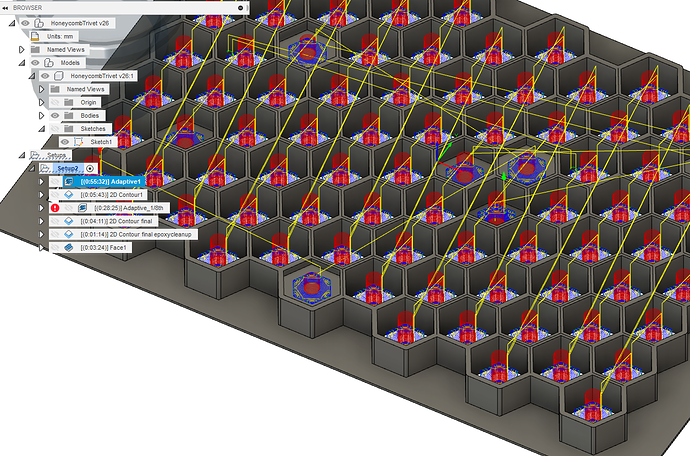
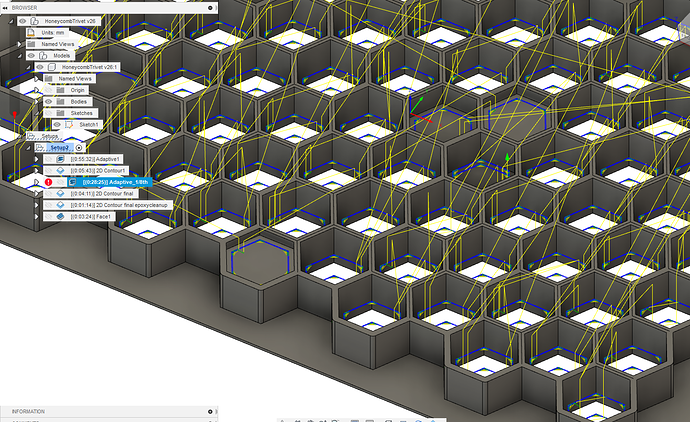

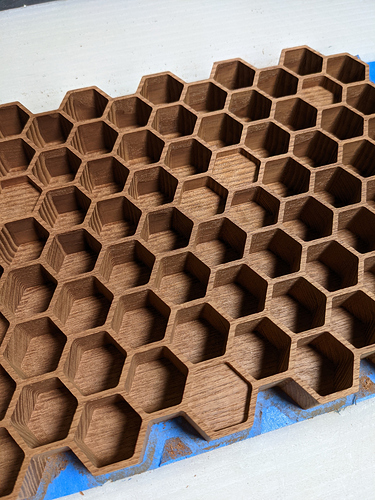

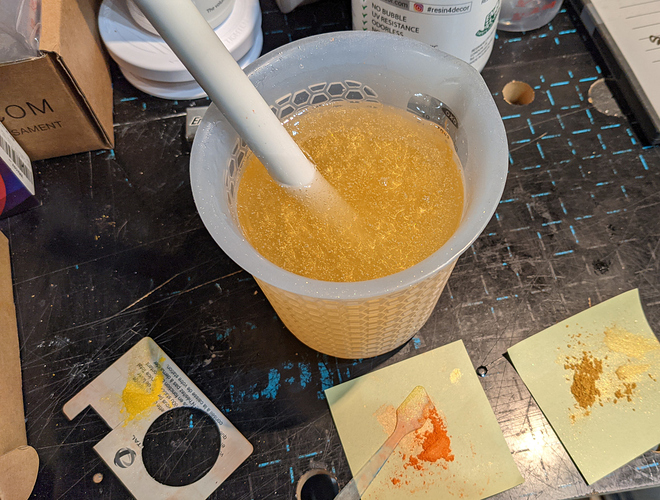

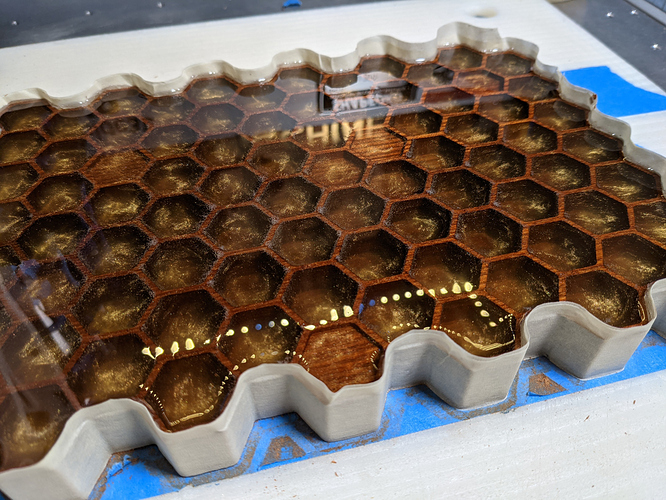
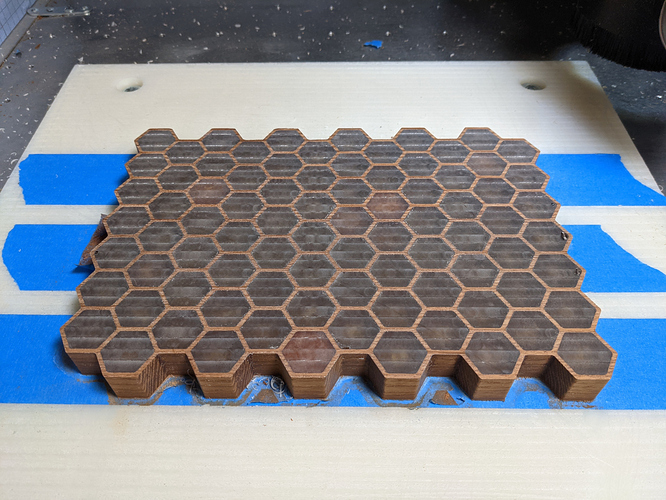
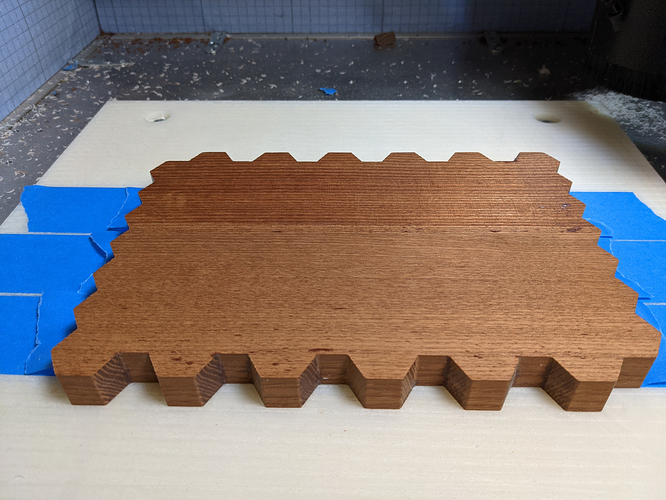
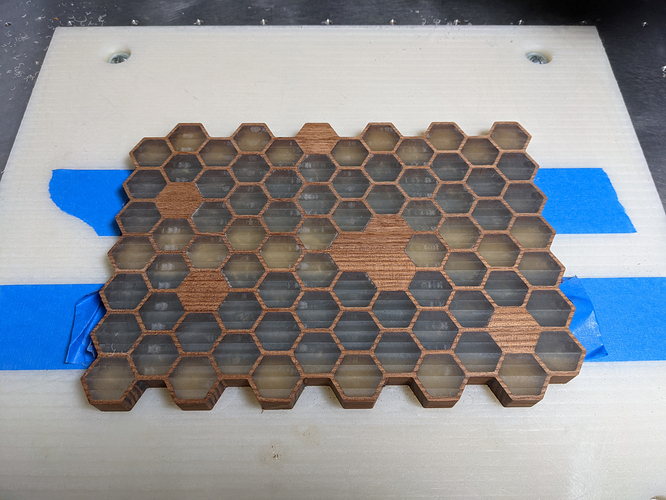
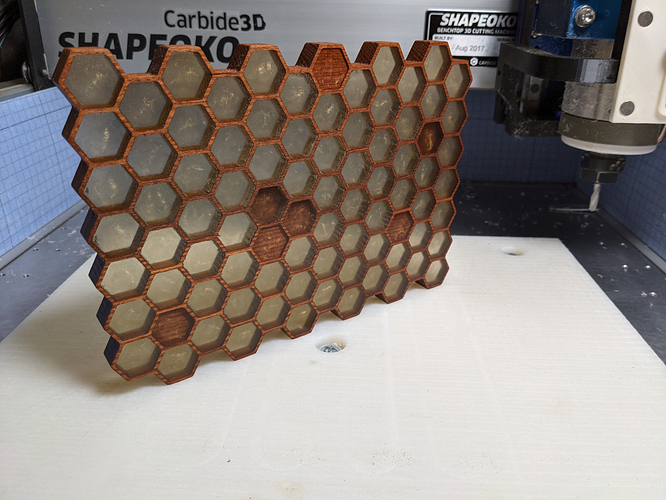
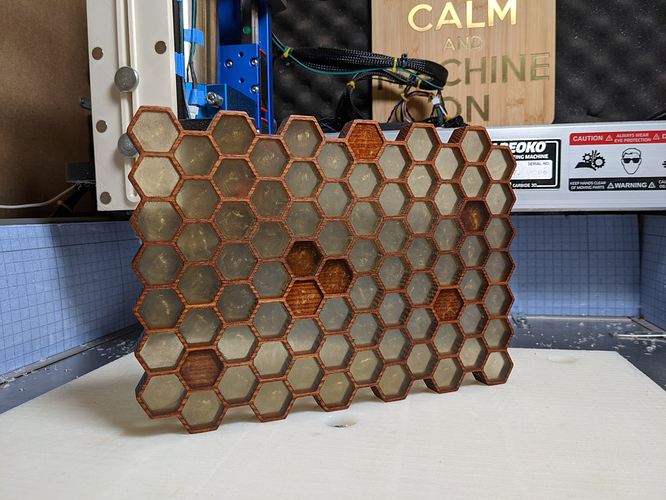


 [still love Fusion360 though]
[still love Fusion360 though]